Journey to the land of the Flying Stone
Categories: Travel
By Pictolic https://pictolic.com/article/journey-to-the-land-of-the-flying-stone.htmlLapland is not Finland, and its symbol is not Santa Claus. This is the polar land of the Sami (Lapps), located in four countries: Finland, Sweden, Norway and Russia. The symbol of Lapland — seida — are sacred objects in which, according to the Sami belief, the souls of deceased shamans found their last resting place. The main seid — the Flying Stone — is hidden in the very center of the Kola Peninsula. After reading a few old legends about these places, our team of three people began to get ready to go.
To do this, we bought inflatable kayaks and learned how to manage them, because the main part of our route was water, in summer there is no other way in these parts.
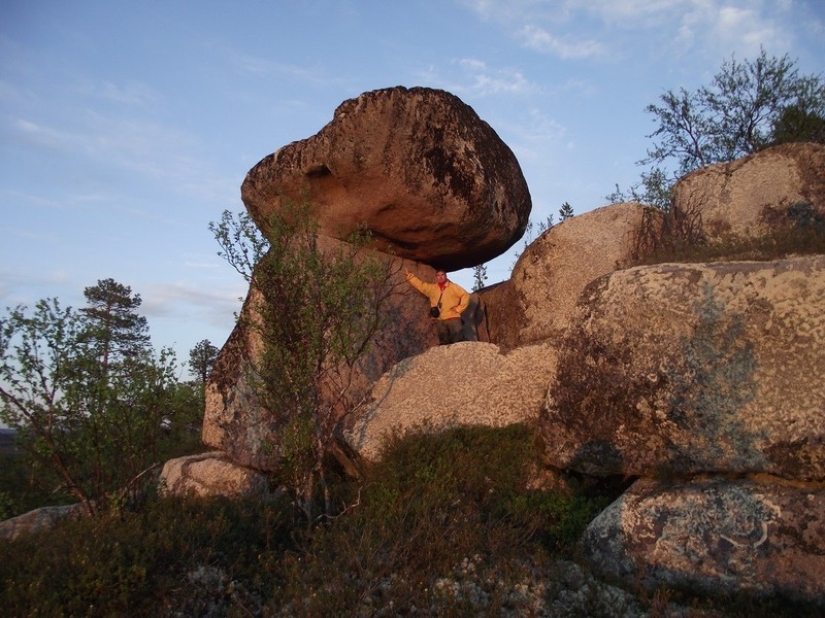

The starting point of the route is the village of Lovozero (Murmansk region), the capital of the Sami reindeer herders. Foreign tourists-fishermen, of whom there are many in these places, translate the name "Lovozero" as "lake of love". In fact, it is the "lake of the strong".
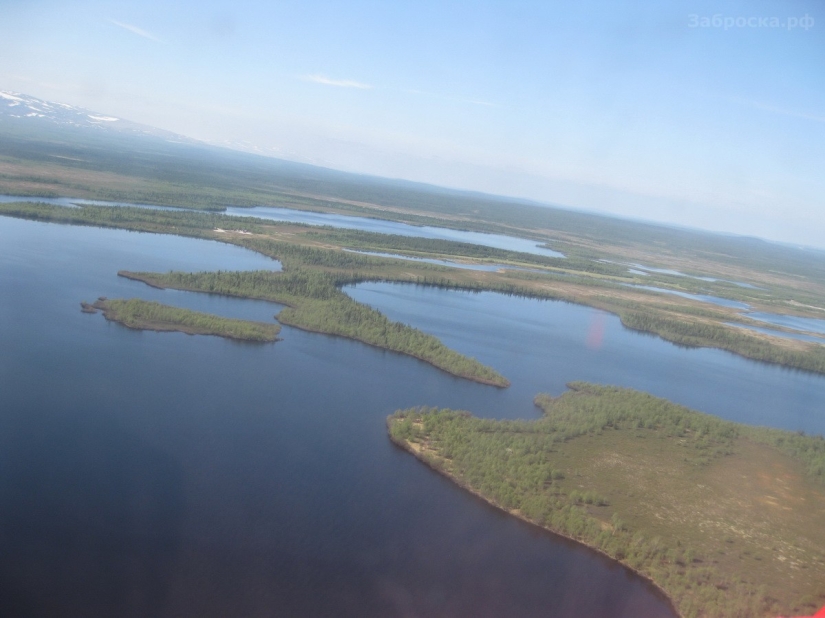
We fly over the taiga and the swamp, the Lovozersk tundra mountains are visible in the distance. In winter, a snowmobile winter road is laid to Krasnoshchelye, Komi-Izhemsky village on the Ponoy River — about 140 km. In summer, you can get there only by helicopter — in about 40 minutes, or by kayaking along rivers and rivulets — in two weeks.
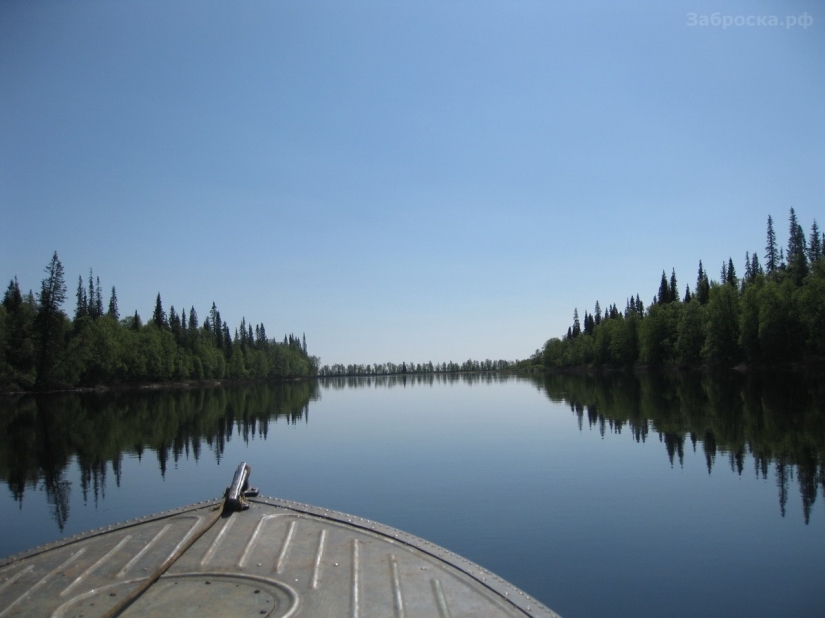
A boat ride from Krasnoshchelye to the village of Chalmny-Varre allowed us to overcome 50 km of the Ponoy depression — a swampy section of the river with almost no current — in two hours. If we were paddling, it would take us two days. So we took a ride with the breeze…
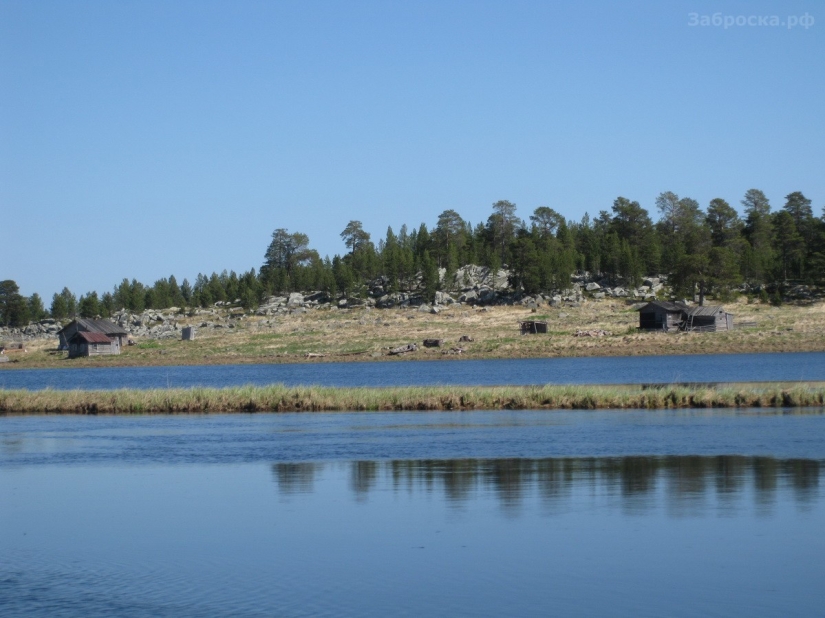
Chalmny-Varre (Ivanovka) is an abandoned Saamo-Izhma settlement (pogost). In the 70s of the last century, it was planned to build a hydroelectric power station in the lower reaches of Ponoy, the village had to go under water. Residents were relocated, but the power plant was never built. Unfortunately, we did not find the stones with petroglyphs (II-I centuries BC), which this place is known for, because they were flooded by the flood.
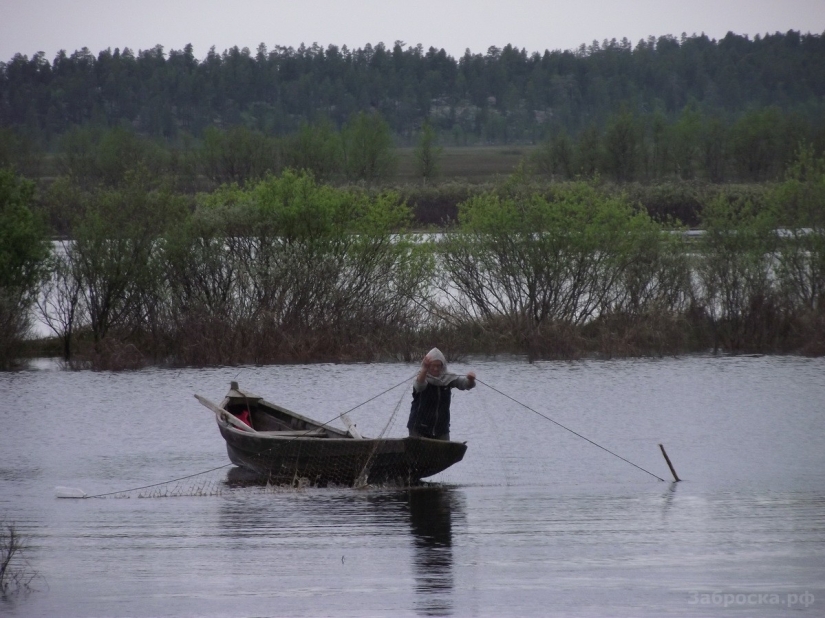
Baba Luba is the only resident of Chalmna-Varre. By the way, the name of the village translates from Sami as "eyes of the forest" or "wherever you look, there is a forest everywhere".
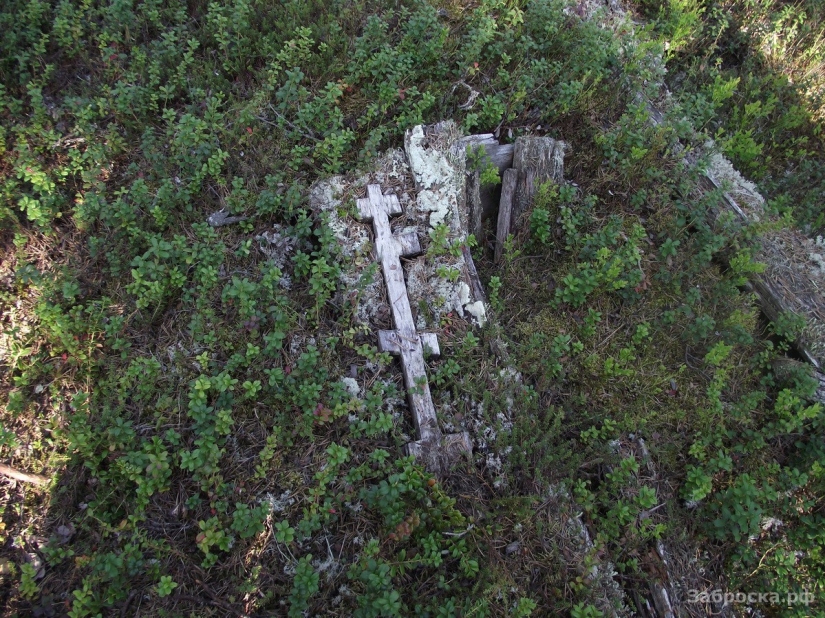
An old Sami cemetery. In the XIX century, the Sami were already baptized, but their cross is slightly different from the Orthodox one — it has many crossbars. A shelter was placed over the coffin, because shallow graves were dug because of the permafrost.
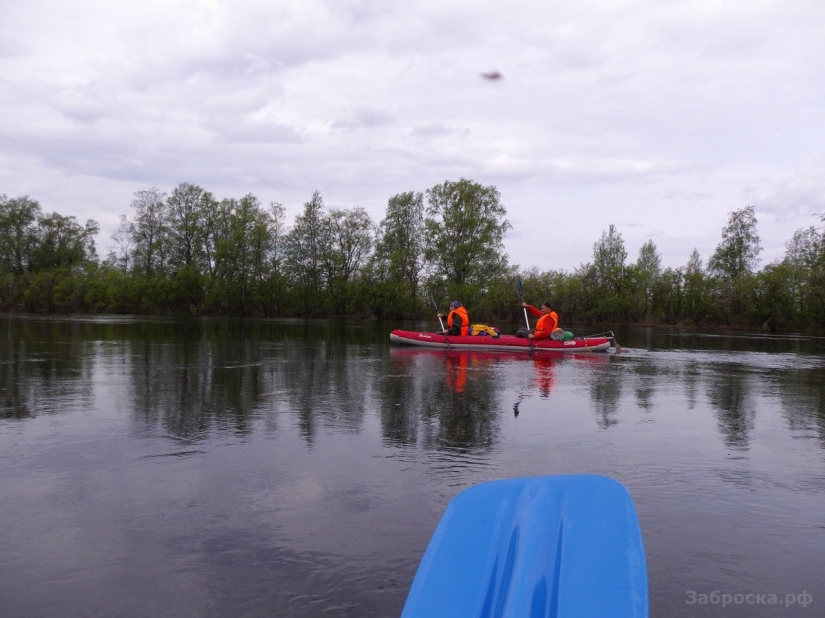
After exploring the surroundings, we inflate the boats and start shoveling with oars! Pay attention to the UFO on the horizon — it's a mosquito. There is a lot of midge, even though we were on the Kola in early June (spring by local standards), and he often gets into the frame.
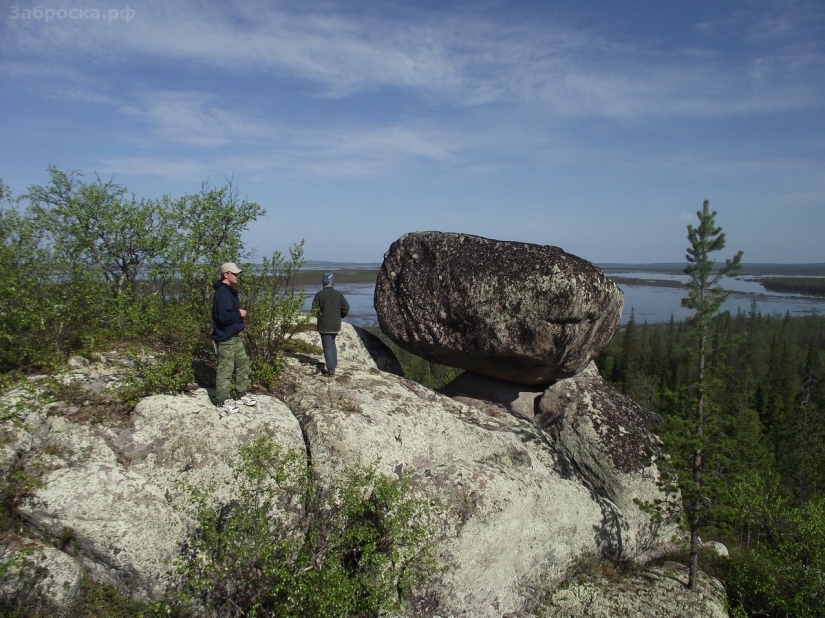
We walked along Ponoy and Nizhnekamenskoe Lake for 20 km . The flying stone was found quickly — it rises above the river bank and it seems that it is about to roll down. In fact, it stands so firmly that in the XIX century, a company of soldiers led by an Orthodox missionary could not turn it, using levers and other devices. So the attempt to overthrow the idol that the Sami worshipped did not end with anything.
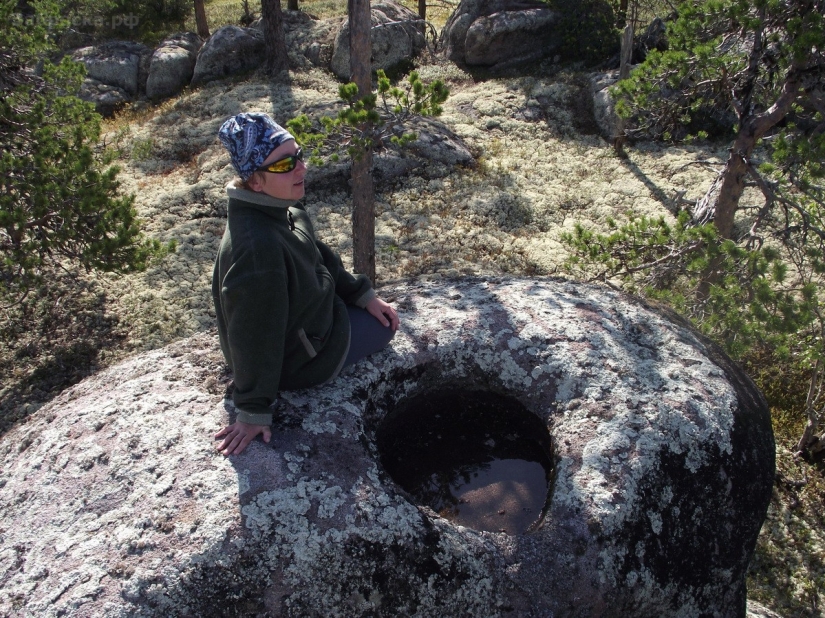
The fact that there was a temple here is also indicated by other objects — obviously man-made oval-shaped wells. Here sacrifices were made, fortunately, inhuman. The stone, which, according to legend, came from other lands, was left with deer antlers and various other offerings.
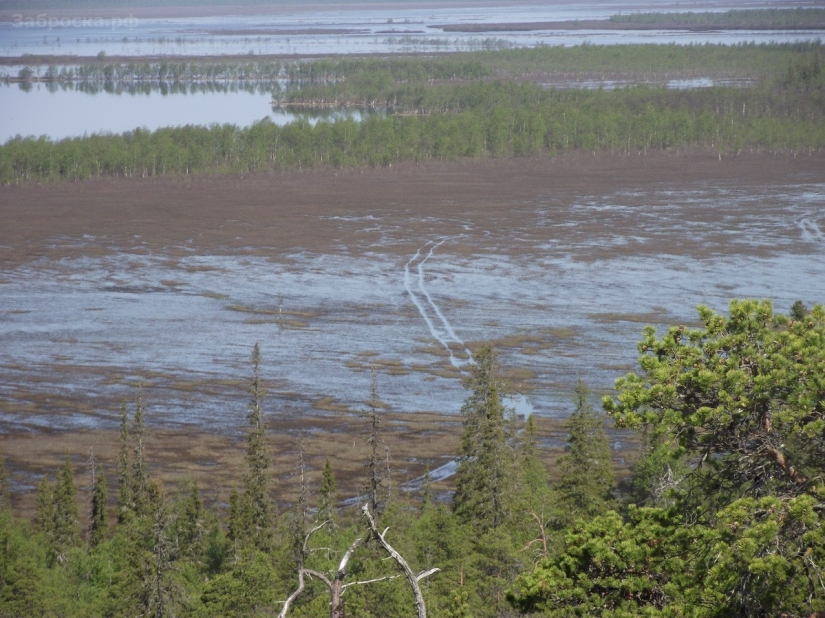
From the height of the Seidaphk Mountain, on which the Flying Stone stands, a breathtaking view opens. There are traces of a winter road winding in the swamps, or maybe it was Santa Claus who rode here on a swamp walker? Is it necessary for grandfather to somehow bypass his possessions in the summer?
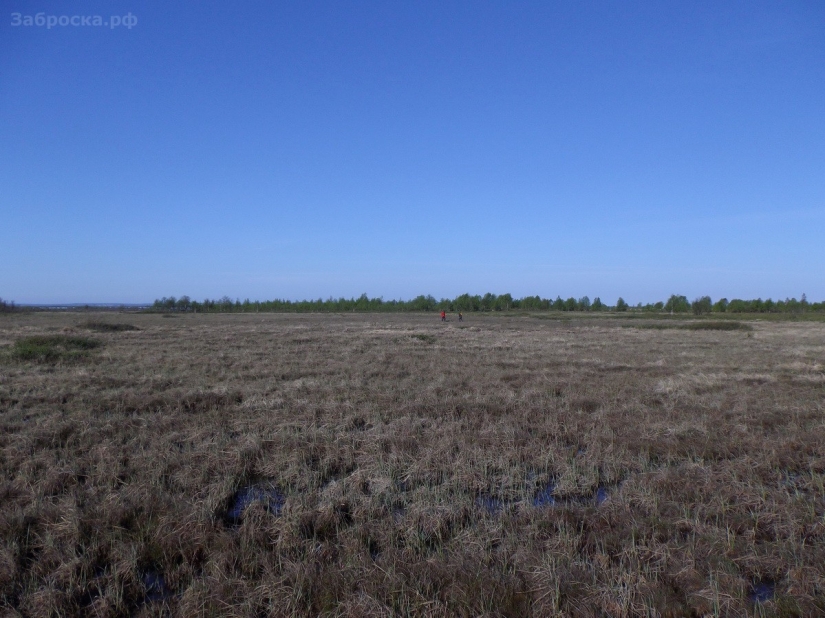
In order to find another Sami antiquity — the Great-Grandfather rocks, we had to walk 6 km through such a swamp. When the earth is literally walking under your feet, you can hear the howling of the Baskervilles' dog in your ears and remember about the Greenpeace quagmire.
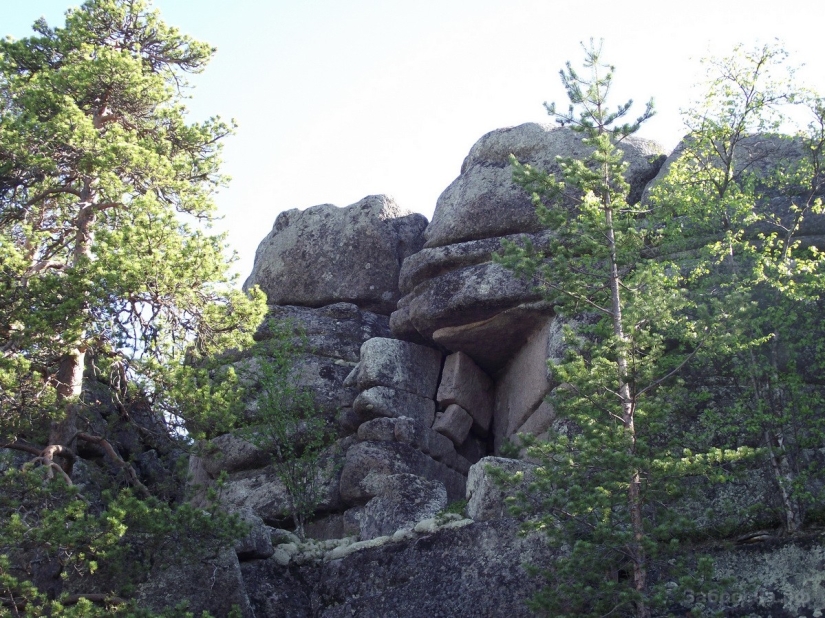
The fossilized ancestors of the Sami are an old man and an old woman. If you turn on your imagination, then you can see two profiles in these idols. The Sami visited these places only out of urgent need, so as not to disturb the peace of their ancestors. At the rocks they performed the rituals of lykhte-verre.
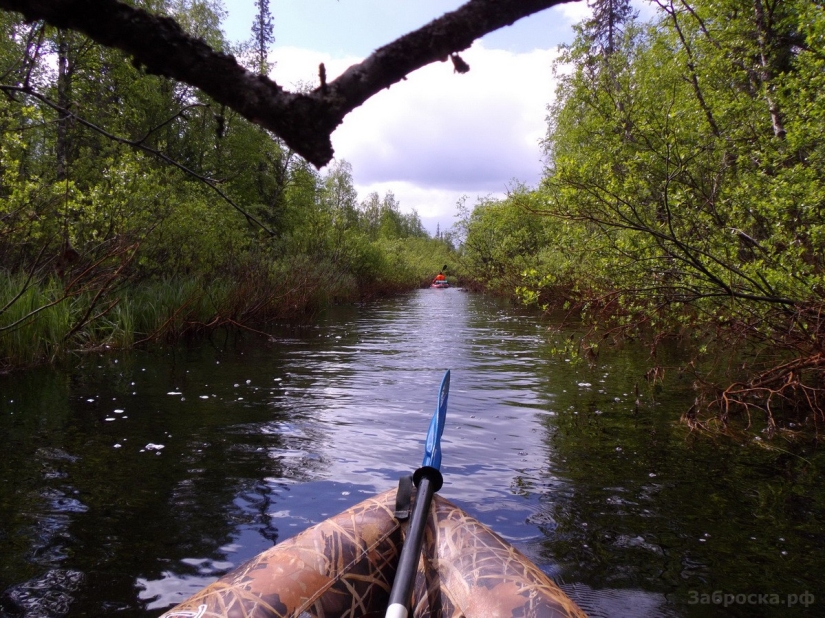
The sports part of our route has been replaced by the historical and ethnographic one. We had to walk about two hundred kilometers along rivers, streams and lakes to the village of Varzuga — almost to the White Sea.
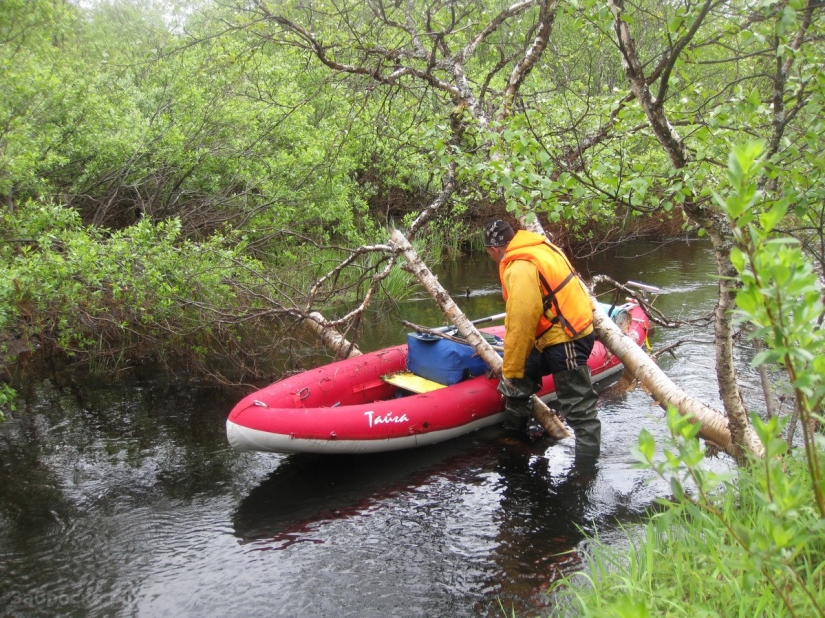
Sometimes I had to wade through thickets, rubble, driftwood. For example, like this!
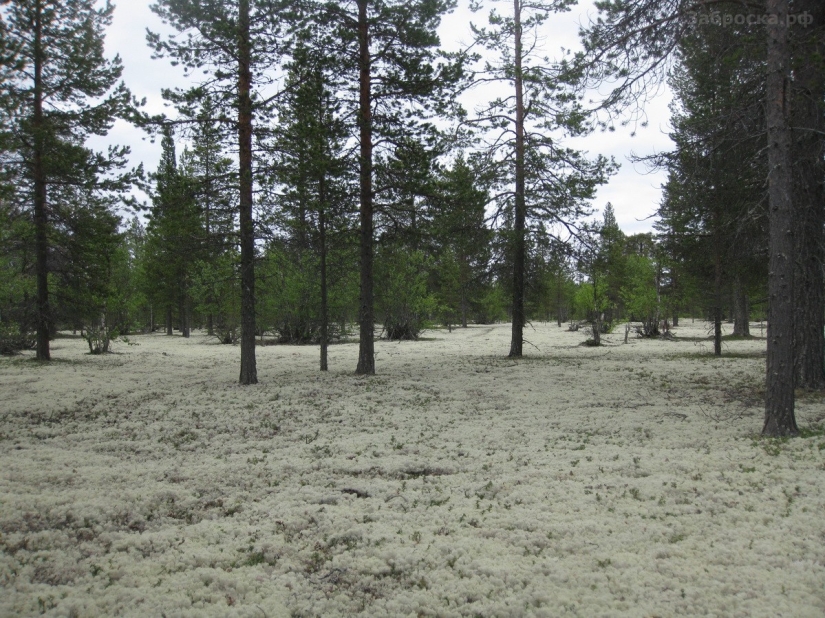
There were incredibly beautiful places on the route. This is a berry forest on the Kinemur creek. The white yagel carpet crunches like snow, you drown in it up to your ankles.
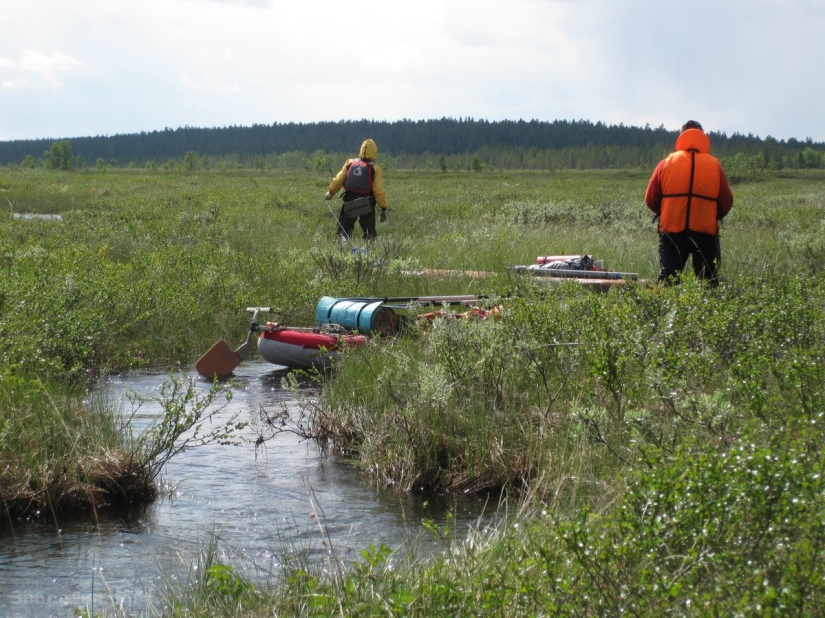
And you can go through the swamp on a kayak, or rather, next to it!
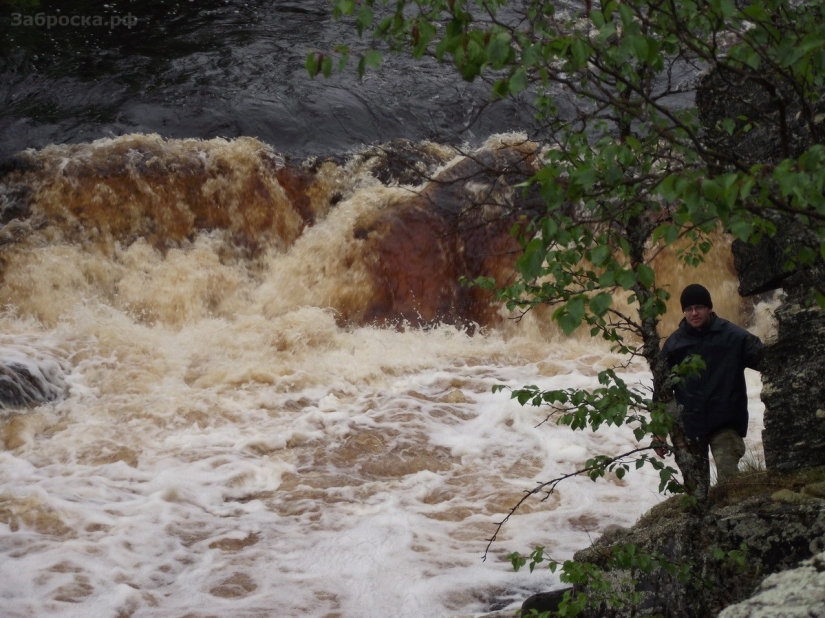
The famous Padun Waterfall on the Malaya Varzuga River. Maxim passed through it without prior preparation and insurance on a "mattress" (as inflatable kayaks are sometimes contemptuously called). Random extreme rafting took place without casualties! Lucky guy! It is a pity that it was not possible to take photos of the faces of other participants of the trip, green with fright.
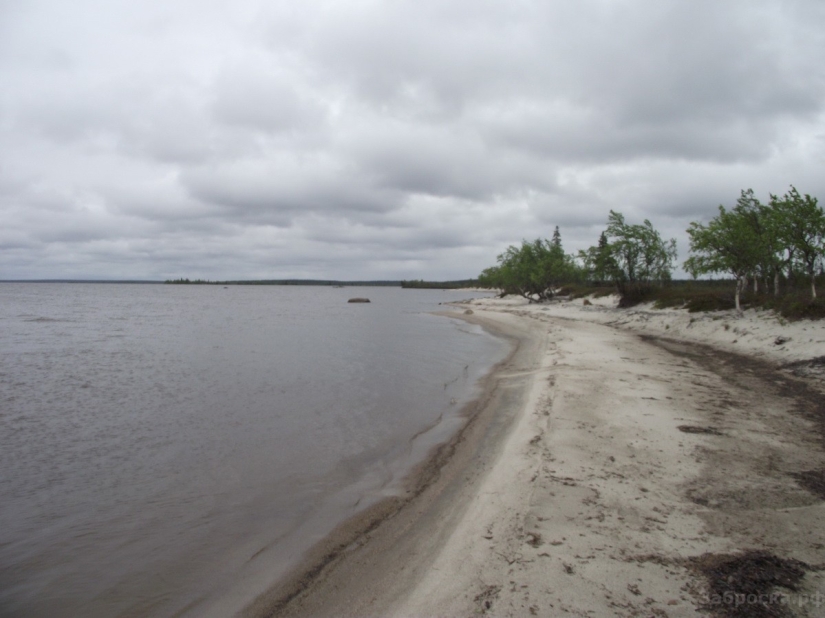
Another test is Sergozero. The weather has noticeably deteriorated, it was stormy. Our two crews were blown apart by the waves and the wind, and we lost each other. Couldn't have been more than a day. It's good that we agreed in advance about the meeting place — on this beautiful white sand beach.
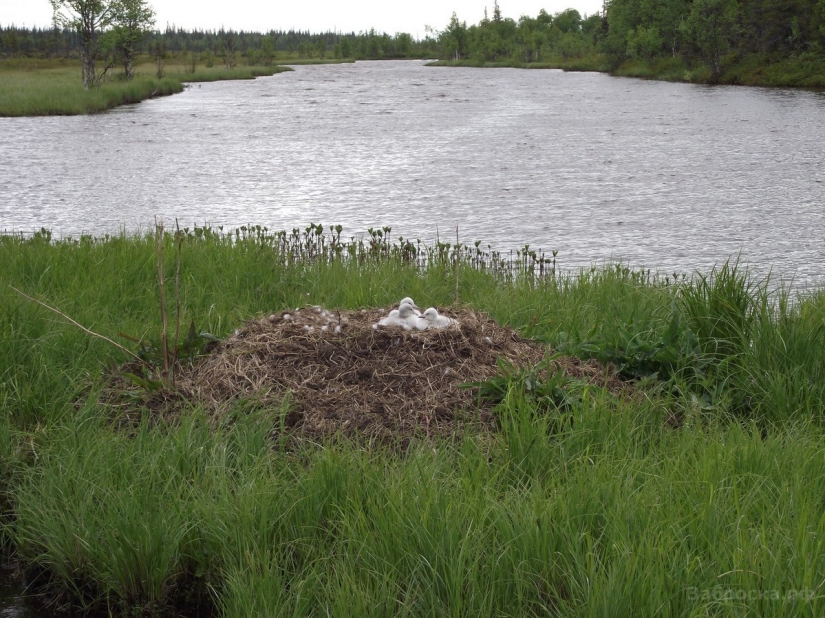
The final stage of the trip — the Serga River — pleased with unexpected meetings with representatives of the local fauna. Fortunately, not with a bear. We saw only numerous traces of a hungry animal after hibernation. But right in the middle of the river we came across a swan's nest with very mimic chicks, an otter emerged almost next to the kayak, and a white-tailed eagle gave us parking above the waterfall.
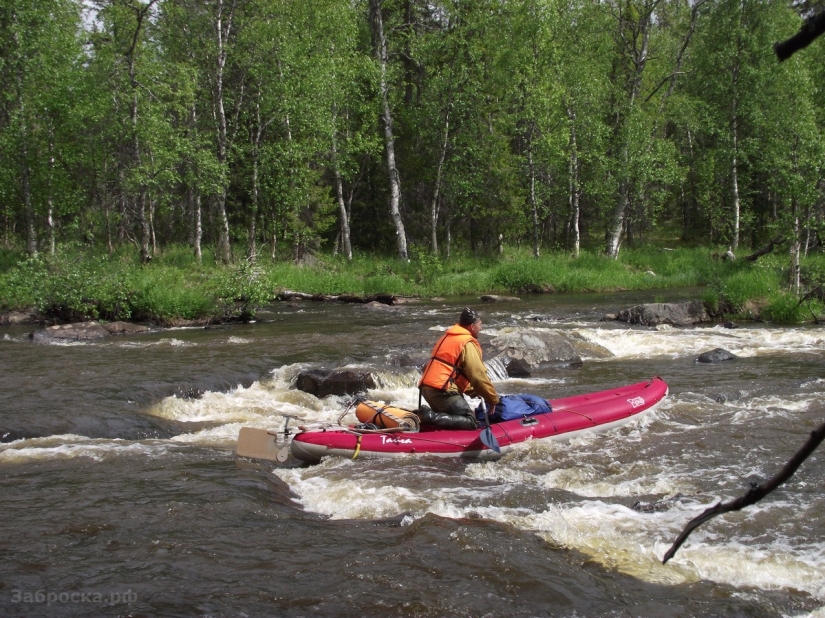
Rapids, rapids, pelts.
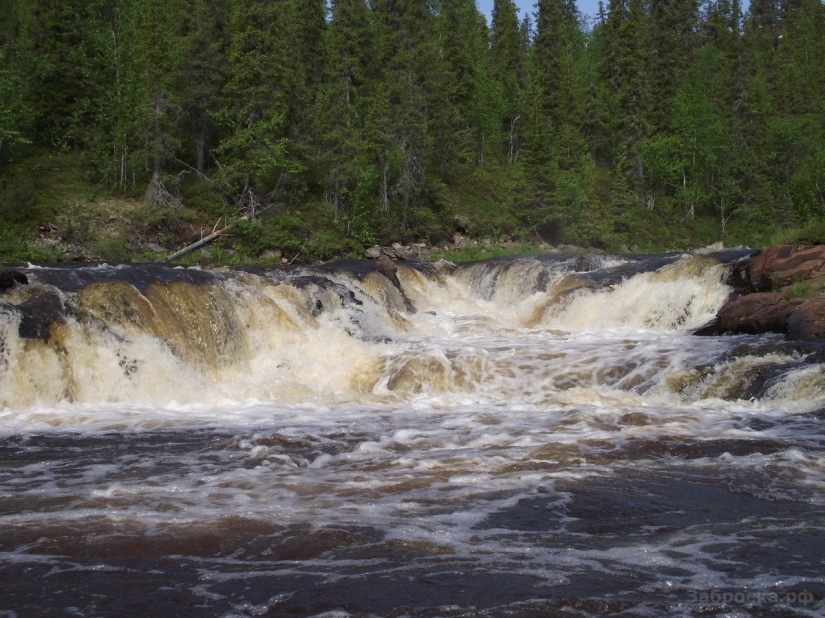
Waterfall on the Serga River, nameless. Fortunately, after seeing it on the map and remembering the adventures on Padune, we did a reconnaissance. So we didn't have to foolishly jump into it!
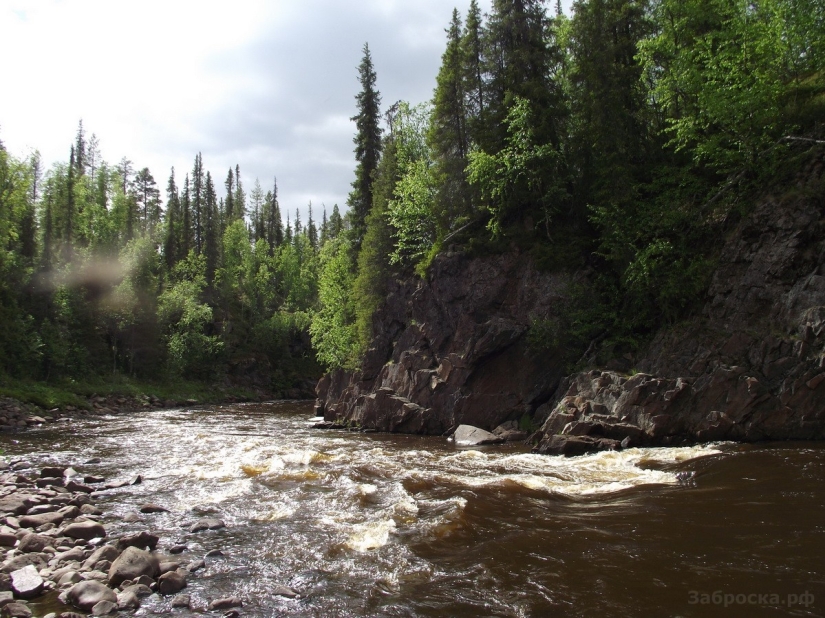
High granite shores and canyons and, of course, the "gray death" curling around the lens.
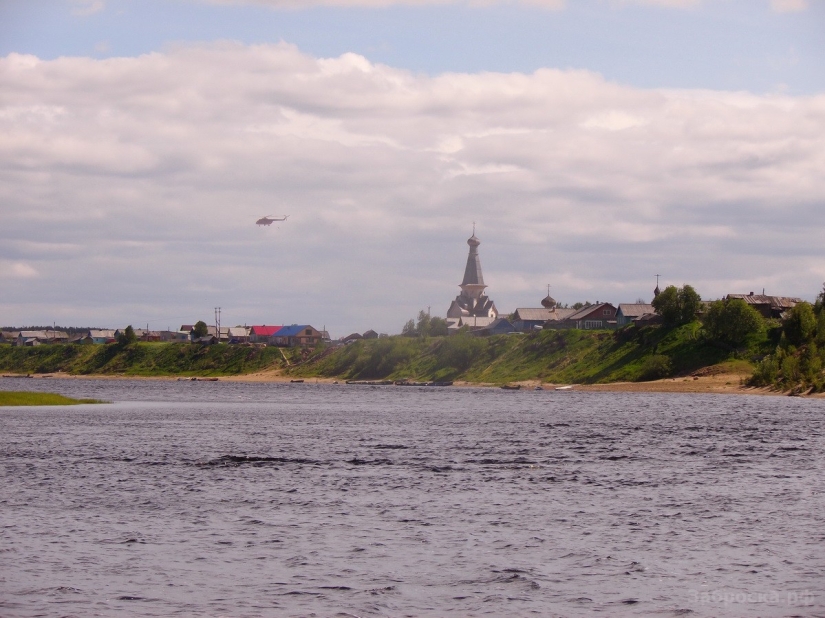
The village of Varzuga is the exit point from the route. You can get from here to the "Mainland" either by helicopter or by motor transport. Three times a week there is a bus to the city of Kandalaksha — 250 km.
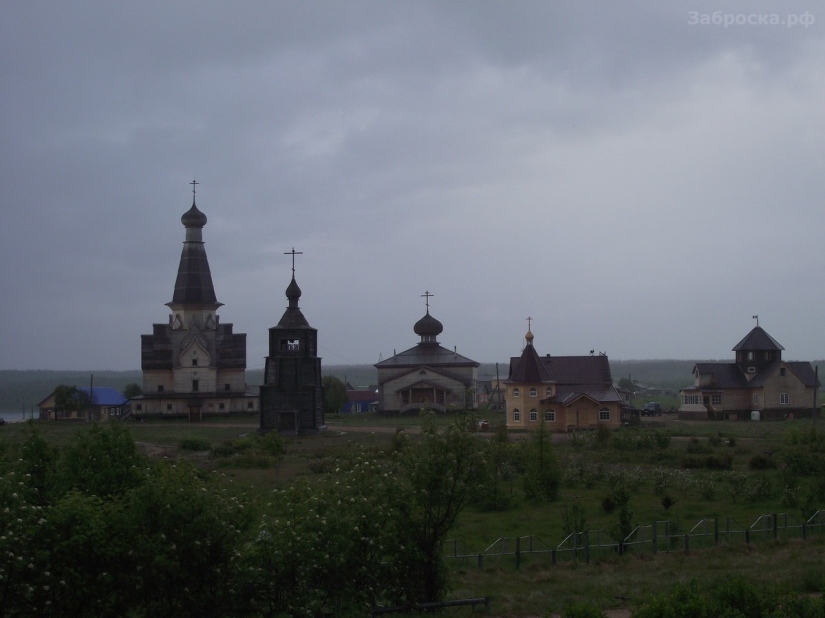
Varzuga is a Pomeranian village mentioned in charters from the XV century. It is known for its church wooden architecture.
Keywords: Kayaks | Stone | Lapland
Post News ArticleRecent articles

The next time you're at a dinner party and someone lays out different nuts, take a moment and let everyone know that many of the ...

Discussions have been going on about the origin of the Americans' nickname "Yankee" for a very long time. There are many versions, ...
Related articles

Contemporaries say that Nicholas II was a very versatile man, active and with a lot of Hobbies. Despite his busy schedule, he found ...

Do you think that a studio apartment can't be a tropical garden? The designers of one of the Indian architectural studios have ...

In the ancient settlement of Taima in Saudi Arabia there is a mystical rock that is more than 4,000 years old. An unusual block of ...

A nudist cruise isn't just a clothing-optional sea voyage; it's an entire subculture with its own rules, traditions, and ...